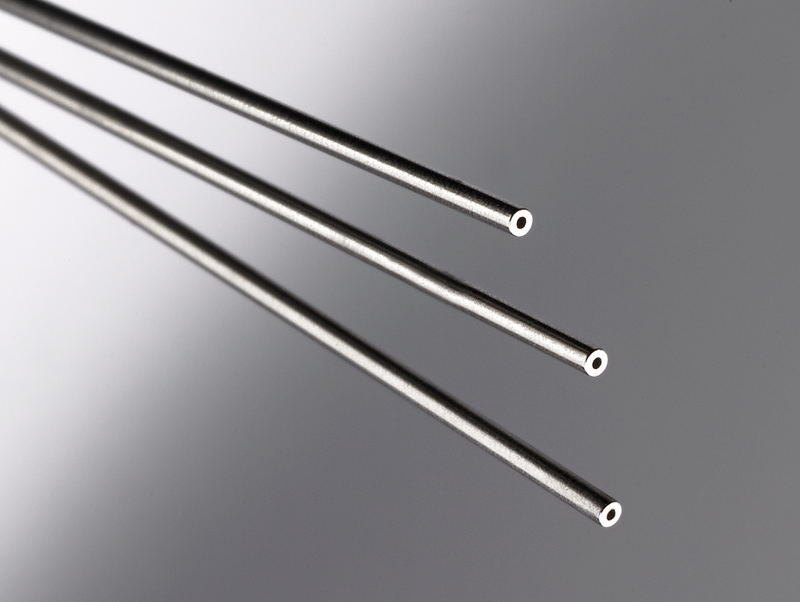Where Results Are Only as Accurate as the Sample Amount Dispensed
From food science and controversial GMOs to pharmaceutical development and medical research, to the routine tests that are part of an annual checkup, liquid dispensing systems play a largely unseen but critical part in everyday life.
That’s because many biotechnology and laboratory tasks begin with moving samples of a fluid between containers and dispensing a precise amount onto or into a testing medium. That’s true whether the task is an experiment in gene sequencing or antibody testing, or an everyday analysis of blood or urine.
In the typical large setting where these processes are performed — such as a hospital running tests on 600 patients or a lab examining 10,000 samples — fluid dispensing systems are, well, . . . indispensable. They perform a task that would be tedious, time consuming, more expensive, and more subject to human error if performed by hand for such large-scale applications.
The fluid dispensing systems used in diagnostic, biotech, and research labs often depend on very small tubing to dole out tiny amounts of liquid at high throughput. These tubes may have an inside diameter (ID) as small as 50 microns or even 100 microns — that’s close to the size of a single human hair.
And the characteristics of the precision tubing can make or break the process.
What are some issues to consider when using liquid dispensing systems?
Whenever you are using liquid dispensing systems, the primary concern is knowing the exact amount of liquid being dispensed. There are many reasons why this is crucial, including:
- The need to perform a large number of tests with a finite sample size. For instance, you may need to use blood drawn from a patient to perform dozens of screening procedures — and you don’t want to have to go back and draw more blood to complete the testing.
- The need to know how much of another liquid (such as a reagent) must be added to the dispensed sample to perform an analysis. This is because the amount of interaction in the sample is often a function of the amount of other liquid.
- The high cost of the reagents used to perform analyses. That means you want to use the minimum amount necessary to achieve measurable results.
- The improved sensitivity of the machines that perform the analyses. Because these machines can now use smaller amounts of both the sample and the testing medium, fluid dispensing systems need to be more precise.
Naturally, a wide range of variables can have an impact on the accuracy of the fluid dispensing systems used in biotech and lab automation, including the choice of instrument and the specific methodology used.
But in systems that utilize small tubing for dispensing a liquid, the precision of the tubing itself plays a vital role in helping to ensure that the dispensing systems are accurate and the results are valid.
What is the role of precision tube cutting in fluid dispensing systems?
Previously limited by the inability of tubing manufacturers to attain tight tolerances — even when cutting metal tube precisely, the ID tolerances varied too much — designers used to rely on the pumping mechanism to try to ensure the accuracy of liquid dispensing systems
In other words, if the tolerances of the tubing ID were greater than the tolerances needed to achieve a valid result, the tighter tolerances would have to be achieved despite the limitations of the tubing.
However, with the improved precision and tighter tolerances of cutting metal tube today, liquid dispensing systems now depend on the combination of pumping and precision cut-to-length tubes for reliable performance.
Advantages of precision tube cutting
To avoid accuracy issues in liquid dispensing systems, it can help to have tubing that:
- Is cut to the correct length and drawn to the desired inside and outside diameters
- Has a clean, burr-free ID and a properly cut end
For example, as sample sizes have gotten smaller, the destination for the samples has also gotten smaller. Well plates that used to have 16 spots for depositing samples now have in the range of 1,500 very small openings in the plate surface.
That means the tubing in liquid dispensing systems needs to be straight, cleanly sheared, and properly finished at its end — for instance, flat, angled, or rounded, depending on what is being tested — so that the tubes align precisely with the very tiny wells in the test plate.
Effects of precision tube cutting on carryover contamination risk
The precision of the tubing in fluid dispensing systems can also have an impact on phenomena such as wicking and the so-called last drop problem:
- Wicking occurs when some of the liquid sample comes up the outside of the tube rather than being dispensed into the proper destination.
- The last drop problem is where a tiny droplet of sample liquid attaches itself to the end of a dispensing tube and stays there.
Both wicking and the “last drop” can lead to carryover contamination in the next testing sample.
While the commonly accepted carryover of 4 parts per billion is certainly achievable, it becomes more challenging in hospitals and other lab environments where a huge number of tests are being performed. Here, the equipment must be washed efficiently while also maintaining lab productivity and cost effectiveness.
Having the proper end cut on the tubing (e.g., flat, angled, or rounded) can help to eliminate wicking and the last drop problem, reducing the chances of carryover contamination in liquid dispensing systems. Having tubing with a clean, burr-free ID also:
- Makes cleaning more effective
- Reduces ID surface roughness that can trap contaminants
We’re not splitting hairs!
With liquid dispensing systems that utilize tubing almost as small as a hair, it’s an understatement to say that precision matters. So, we’re not splitting hairs when we say you want the tube length, ID, outside diameter (OD), and end cut to all be as precise as possible, to help ensure that the amount of sample dispensed will also be as precise as can be.
Read part 2 for a closer look at tubing ID and other variables that can have an impact on the accuracy of liquid dispensing systems. Or to explore different precision cutting options for your metal tubing or other metal part needs, download our free guide, Choose with Confidence: Comparing 2-Axis Precision Cutting Methods.






